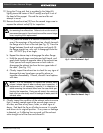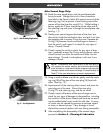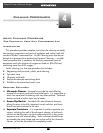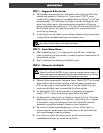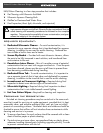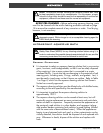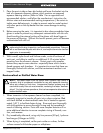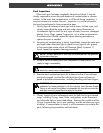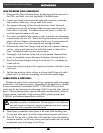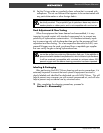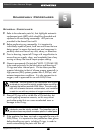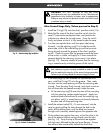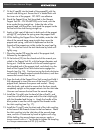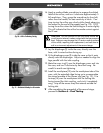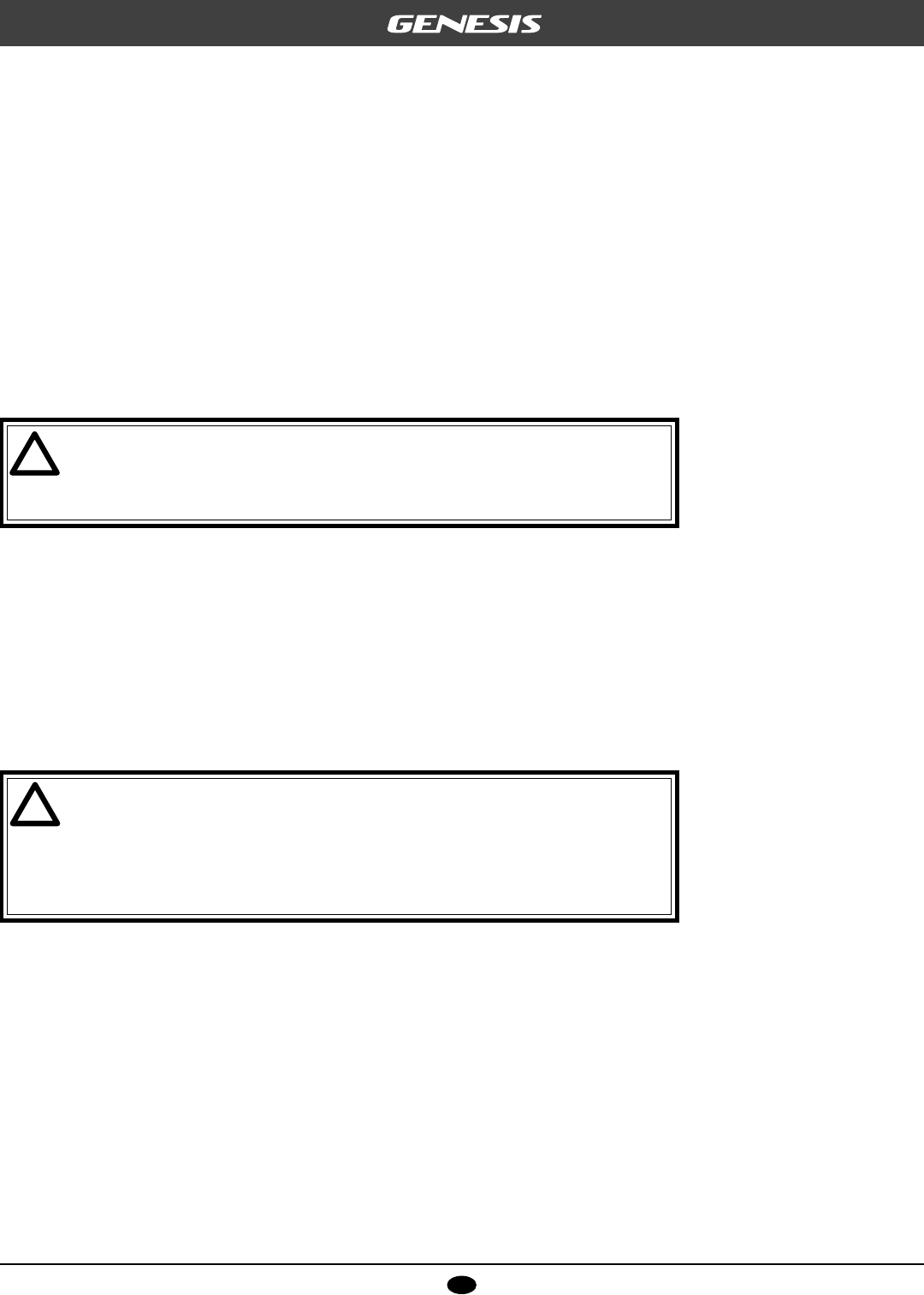
20
Copyright ©2001 Liberty Group
Atlas & Yukon Second Stage
1. Place the parts inside a clean dip basket and lower the basket into the
tank of a separate ultrasonic cleaner which contains an approved
aqueous cleaning solution. (Refer to Table 1 for an approved and
recommended solution, and follow the manufacturer’s instructions for
dilution rates and recommended working temperatures.) Be certain to
isolate more delicate parts, in order to prevent metal on metal contact
with other parts or the dip basket that can cause damage to sealing
surfaces.
2. Before removing the parts, it is important to don clean powderless latex
gloves in order to prevent any subsequent contamination with skin oils.
Avoid touching the external surface of the gloves with bare fingers in
the process of donning. Without this barrier present, parts will become
contaminated with skin oil.
NOTE: It is important to avoid handling clean parts with bare hands while
performing the rinsing, inspection, and reassembly procedures. Doing so
will re-contaminate the parts with skin oil, and require them to be cleaned
again prior to reassembly.
3. With a small, nylon brush and lint-free swabs, scrub all surfaces of
each part, and allow to soak for an additional 5-10 minutes before
removing from the ultrasonic cleaner. Certain parts with complex
features may require more attention - especially those which contain
closed recesses and chambers. It is important to ensure that these are
thoroughly flushed with solution, and that contaminant residue is not
trapped inside.
Demineralized or Distilled Water Rinse:
NOTE: Tap water drawn from the faucet often contains high levels of
minerals, and is considered unsuitable for use with aqueous cleaning,
either as a diluent or final rinse. Inexpensive filtration systems may be
used which easily filter out most minerals, rendering the water “deminer-
alized.” For high volume operations, this is a less expensive alternative to
bottled distilled water.
1. When immersion in the aqueous cleaner has been completed, it is
extremely important to transfer all parts into a clean container filled
with fresh distilled or demineralized water that is heated to approxi-
mately 140˚ F, to facilitate faster drying. Rinse each part thoroughly
with mild agitation to ensure thorough rinsing and the complete re-
moval of cleaning solution. Parts with more complex features will re-
quire additional attention to ensure complete rinsing of threads, crev-
ices, and recesses.
2. Dry immediately afterward, using only low pressure (50 psi), hydrocar-
bon-free gas (Nitrogen or EAN).
3. When drying is completed, set the parts aside on a clean, lint-free
surface covered with butcher paper or cellophane.



